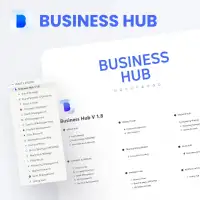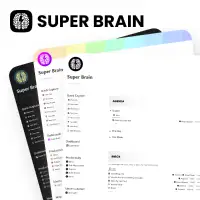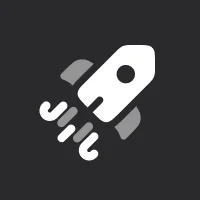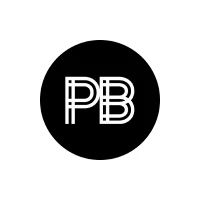From Chaos to Clarity: A Review of ‘Getting Things Done’ by David Allen
Review of Getting Things Done: These are my personal notes on David Allen’s book Getting Things Done!
Dive into our comprehensive review of ‘Getting Things Done’ by David Allen. Explore the revolutionary methodology that transforms chaos into productivity. Uncover key takeaways and insights to elevate your task management game.
Unlocking the Secrets of Productivity: Exploring ‘Getting Things Done‘

Overall Thoughts
Well, well, well, my fellow seekers of sanity in the midst of chaos, Mr. Pugo here with my take on “Getting Things Done: The Art of Stress-Free Productivity” by the productivity maestro himself, David Allen. Spoiler alert: this book is like a treasure map for navigating the sea of tasks that is our lives. From unraveling the mysteries of GTD to learning how to tame the task beast, Allen’s got us covered. So, grab your magnifying glass and a cup of motivation, because we’re about to embark on a journey to discover how to transform our lives from chaotic confusion to organized efficiency.
Main Takeaways
- GTD isn’t just a method, it’s a mindset shift.
- Capturing tasks and thoughts externally frees up mental space.
- Organizing tasks into actionable steps makes the mountain seem climbable.
- Regularly reviewing and updating task lists keeps you on track.
- Prioritizing tasks based on context and energy levels maximizes productivity.
In the relentless chaos of modern life, where to-do lists stretch longer than a CVS receipt and time feels more elusive than ever, “Getting Things Done: The Art of Stress-Free Productivity” by David Allen emerges as a guiding light. It’s not just a book; it’s a strategic manifesto for conquering the tumultuous sea of tasks while maintaining a sense of balance and tranquility. Let’s unpack the main takeaways that make this methodology a transformative mindset shift rather than just another productivity method.
1. GTD Isn’t Just a Method – It’s a Mindset Shift: At the heart of GTD lies a paradigm shift – a new way of looking at tasks, commitments, and the mental real estate they occupy. This isn’t merely a checklist to tick off; it’s a philosophy that seeks to liberate the mind from the constant nagging of unfinished tasks. GTD encourages you to become the curator of your thoughts, liberating your cognitive resources to focus on creativity and problem-solving rather than mundane task tracking.
2. Capturing Tasks and Thoughts Externally Frees Up Mental Space: One of the first lessons GTD imparts is the power of externalization. Our brains aren’t built to be efficient task managers; they’re wired for creativity and problem-solving. Allen emphasizes the importance of capturing every task, idea, and concern externally – be it in a notebook, digital app, or even a napkin. This simple act unburdens your mind, creating space for more impactful thinking and reducing the stress that stems from the fear of forgetting.
3. Organizing Tasks into Actionable Steps: The mountain of tasks can seem insurmountable when viewed as an undifferentiated mass. GTD urges you to break tasks into bite-sized chunks. By turning projects into actionable steps, you dismantle the psychological barriers that often prevent progress. Each step becomes a tangible victory, moving you closer to your goals while evoking a sense of accomplishment that fuels further productivity.
4. Regularly Reviewing and Updating Task Lists Keeps You on Track: Imagine your task list as a garden – it requires regular tending to prevent weeds of distraction from taking over. GTD introduces the Weekly Review, a designated time to assess your tasks, projects, and commitments. This practice not only keeps your task list up to date but also provides a panoramic view of your goals and priorities. It’s like recalibrating your compass to stay on the path to success.
5. Prioritizing Tasks Based on Context and Energy Levels: GTD isn’t just about doing more; it’s about doing what matters most at the right time. Context and energy play pivotal roles in determining task priority. Allen advises matching tasks with the context you’re in – whether you’re at the office, home, or even waiting in line at the grocery store. Additionally, recognizing your energy levels enables you to tackle demanding tasks when you’re at your peak and reserve routine tasks for periods of lower energy.
In the realm of productivity, where countless methodologies vie for attention, GTD sets itself apart by focusing on the holistic well-being of the individual. It’s not just about getting more done; it’s about creating an environment where productivity flourishes alongside mental clarity and a sense of control.
Applying GTD in Real Life:
Let’s put these takeaways into action with a real-life scenario. Meet Sarah, a marketing professional juggling multiple campaigns, meetings, and personal commitments. Sarah often finds herself overwhelmed, struggling to keep track of tasks and missing deadlines. Enter GTD.
Mindset Shift: With GTD, Sarah transforms her perception of tasks from looming threats to conquerable challenges. She understands that this methodology isn’t a quick fix but a transformative journey toward reclaiming her mental space.
Externalizing Thoughts: Sarah starts capturing tasks immediately as they pop into her mind, using a digital note-taking app. As she offloads tasks onto her digital canvas, she notices her anxiety levels drop, making room for more focused thinking.
Organizing Tasks: Instead of viewing campaigns as behemoth projects, Sarah breaks them down into manageable tasks – researching, drafting, designing, and scheduling. Each task becomes a stepping stone toward campaign success, boosting her motivation and sense of control.
Regular Review: Every Friday, Sarah dedicates time to the Weekly Review. She reviews her tasks, assesses their status, and aligns them with her goals. This practice helps her course-correct, eliminate redundancies, and ensures she’s consistently moving forward.
Context and Energy: Sarah embraces the power of context and energy in task prioritization. While waiting for a meeting to start, she tackles quick emails and administrative tasks. During her peak creative hours, she immerses herself in campaign brainstorming and content creation.
Conclusion: In a world that glorifies busyness, “Getting Things Done” serves as a beacon of sanity. Its main takeaways transcend mere productivity and dive deep into the realm of self-awareness, intentional action, and stress reduction. GTD isn’t a one-size-fits-all solution; rather, it’s a customizable toolkit that empowers individuals to craft their own path to success.
As you embark on your GTD journey, remember that it’s not about achieving a robotic level of efficiency. It’s about orchestrating your tasks in harmony with your aspirations, allowing you to navigate the complex symphony of life with grace and composure. So, arm yourself with the GTD methodology, embrace the mindset shift, and embark on a quest toward stress-free productivity that promises to enrich not just your task list, but your entire life.
About the Writer (From My Point of View)
David Allen, the maestro of productivity, has been honing his craft for decades. He’s the OG guru who’s been dropping knowledge bombs in the productivity arena longer than most of us have been battling procrastination. His ideas have been buzzing around like worker bees in the productivity hive, and it’s no wonder – the man knows his stuff. So, let’s dive into this literary treasure chest and see if the gems inside match the reputation that precedes them.
Chapter 1 – The Art of Getting Things Done: “Mind Like Water”
In the bustling orchestra of modern life, where demands pull us in myriad directions, the quest for productivity often feels like taming a tempest. In “Getting Things Done: The Art of Stress-Free Productivity,” David Allen introduces us to a paradigm-shifting concept right from the outset: “mind like water.” As we step into the first chapter, let’s explore this notion that promises to be the cornerstone of our journey toward conquering chaos and achieving a state of calm efficiency.
- “Mind Like Water”: Decoding the Metaphor
- Imagine a tranquil pond – its surface smooth and mirror-like, reflecting the surrounding landscape with pristine clarity.
- In this metaphor, our mental state becomes akin to the calm pond.
- From Chaos to Clarity:
- Modern life often leaves our minds in a state of constant turbulence.
- The “mind like water” philosophy seeks to transcend this turbulence.
- Ripples of Thought:
- In the metaphor, the ripples represent our thoughts and tasks.
- New thoughts or tasks create ripples, disrupting the pond’s surface momentarily.
- Mastering the Reactive State:
- The “mind like water” state emphasizes being present and engaged with the task at hand.
- This is in contrast to the reactive mode where we’re overwhelmed by thoughts.
- Practical Applications:
- The elegance of “mind like water” lies in its practicality.
- This philosophy can revolutionize how we approach tasks and challenges.
Cultivating “Mind Like Water” with GTD:
- Capture:
- Externalize every thought, task, or idea onto a reliable system.
- Prevents mental clutter and overcrowding of the “mental pond.”
- Clarify:
- Examine captured tasks for their significance and determine next steps.
- Achieve clarity on what needs attention and action.
- Organize:
- Organize tasks into categories to prevent clashes and chaos.
- Create a harmonious mental landscape like concentric ripples.
- Reflect:
- Regular review sessions provide clarity on the state of tasks.
- Prevent surprises, enabling informed decision-making.
- Engage:
- Engage with tasks and challenges from a place of intention.
- Respond thoughtfully and deliberately, maintaining equilibrium.
Incorporating “Mind Like Water” into Daily Life:
- Morning Routine:
- Approach the day’s tasks like ripples in the pond.
- Acknowledge, process, and let settle as you move forward.
- Mindfulness and Engagement:
- “Mind like water” is a call to be present and engaged.
- Respond to the world intentionally rather than reacting.
The Deeper Currents:
- Beyond Productivity:
- “Mind like water” transcends productivity; it’s about mindfulness.
- It invites us to reclaim our mental sovereignty and respond intentionally.
Conclusion:
As we close the first chapter of “Getting Things Done,” the concept of “mind like water” lingers like the gentle ripples on a calm pond. It’s a symbol of tranquility amidst the storm of tasks, a reminder that even in the whirlwind of productivity, we can find moments of serenity. The philosophy of “mind like water” invites us to be proactive architects of our mental landscape, creating a space where clarity and focus reign. And so, armed with this wisdom, we venture further into the book, eager to explore the methodologies that will help us achieve the elusive art of stress-free productivity.
Chapter 2 – Getting Control of Your Life: Unveiling the GTD Round Table
As we delve deeper into the realm of “Getting Things Done: The Art of Stress-Free Productivity” by David Allen, we find ourselves face-to-face with the GTD Round Table – a metaphorical assembly of knights armed with strategies to conquer the chaos that often engulfs our lives. Capture, clarify, organize, reflect, and engage – these five stalwart knights hold the key to gaining control over the cacophony of tasks, decisions, and commitments. Let’s unveil the insights of this chapter and explore how each knight contributes to our journey toward serene productivity.
Capture: Gathering the Troops
- Externalization of Thoughts:
- Your mind is a realm of creativity, not a task manager.
- Capture every thought, idea, or task that crosses your mind.
- Externalize them onto a reliable system – digital or analog.
- Preventing Mental Overload:
- Mental clutter leads to stress and overwhelm.
- Capturing tasks externally frees mental space for strategic thinking.
Clarify: Honing the Purpose
- The Interrogation Stage:
- Each captured item is interrogated for its significance.
- What is the purpose of this task? Why is it important?
- Next Action Determination:
- Identify the next physical action required to move the task forward.
- Ambiguity is replaced with clarity, minimizing procrastination.
Organize: The Chivalry of Categorization
- Buckets of Responsibility:
- Tasks are sorted into categories based on context or project.
- Like knights with designated roles, tasks find their proper place.
- Creating a Harmonious System:
- Organized categories prevent tasks from clashing.
- The mental chaos is tamed by the discipline of organization.
Reflect: The Squire of Strategic Review
- The Weekly Review Ritual:
- A sacred time to review your captured tasks and projects.
- Reflect on what’s completed, what’s pending, and what’s upcoming.
- Navigational Adjustment:
- Reviewing helps you steer your productivity ship in the right direction.
- Prevents tasks from derailing and priorities from being overshadowed.
Engage: The Battle Cry of Action
- The Decisive Moment:
- Engaging with tasks is like wielding a sword on the battlefield.
- Armed with clarity, you approach tasks with purpose and resolve.
- Overcoming Procrastination:
- Engaging with tasks eliminates the mental weight of indecision.
- Procrastination loses its grip as you confront tasks head-on.
Unlocking the GTD Round Table in Daily Life:
- Morning Ritual:
- Begin your day by capturing thoughts and tasks that linger from yesterday.
- Clarify your priorities, setting the tone for the day.
- Organizational Nirvana:
- Assign tasks to categories based on where and when they can be accomplished.
- Keep your categories structured and intuitive.
- Reflective Pause:
- Carve out time each week for the sacred ritual of the Weekly Review.
- Reflect on your achievements and recalibrate your focus.
- Engagement as a Lifestyle:
- Cultivate a habit of immediate engagement with captured tasks.
- This transforms procrastination into proactive action.
The Symphony of the GTD Round Table:
- Integration of the Knights:
- The five knights – capture, clarify, organize, reflect, and engage – form a seamless orchestration.
- Together, they curate a state of organized productivity.
- Transcending the Mundane:
- The GTD Round Table isn’t just a mechanical process; it’s an art form.
- It transforms the mundane into a dance of intentionality.
Key Takeaways from Chapter 2:
- Five Essential Steps:
- Capture, clarify, organize, reflect, and engage form the core methodology.
- These steps collectively provide a holistic approach to task management.
- Externalization as a Strategy:
- Capturing thoughts externally prevents mental congestion.
- It creates a mental environment primed for effective decision-making.
- Clarity Drives Action:
- Clarifying the purpose of tasks eliminates ambiguity.
- Knowing the next action empowers immediate engagement.
- Categories as Guardians of Order:
- Organizing tasks into categories prevents chaos.
- Each task finds its rightful place in the grand scheme.
- Reflective Navigation:
- The Weekly Review is your compass for productivity.
- It ensures you’re on track and heading toward your goals.
- Action as the Culmination:
- Engaging with tasks transforms intention into action.
- It dismantles procrastination and empowers progress.
Conclusion:
Chapter 2 of “Getting Things Done” unveils the GTD Round Table – a dynamic system that transforms the chaos of life into a symphony of productivity. Capture, clarify, organize, reflect, and engage – these knights offer a comprehensive strategy for taking control of the chaos and achieving a state of mastery over tasks. As we integrate these strategies into our daily lives, we find ourselves wielding the tools of productivity with finesse and purpose. The GTD Round Table is not merely a set of techniques; it’s an embodiment of intentionality that paves the way toward a stress-free, productive existence. With these insights in hand, we venture onward, ready to face the challenges of our modern world with a newfound sense of control and clarity.
Chapter 3 – Getting Projects Creatively Under Way: Unleashing the Project Alchemist
In the enchanting realm of “Getting Things Done: The Art of Stress-Free Productivity,” we find ourselves at the cusp of transformation as we enter Chapter 3. Here, David Allen, our guide through the labyrinth of productivity, unveils a revelation that might forever change the way we perceive tasks and projects. Brace yourself, for the chapter titled “Getting Projects Creatively Under Way” invites us to don the robes of a project alchemist, where even the seemingly mundane – like planning a vacation – transforms into a masterpiece of productivity. Let’s unlock the secrets within and explore the wisdom that Allen bestows upon us.
Projects as Hidden Treasures:
- Beyond Everyday Tasks:
- Projects extend beyond simple tasks.
- They encompass endeavors that require multiple steps and actions.
- Vacations as Projects:
- Even planning a vacation qualifies as a project.
- From researching destinations to booking flights – each step counts.
Alchemy of Breakdown:
- Breaking the Spell:
- The key to project success lies in breaking it down.
- Each project is dismantled into smaller, manageable tasks.
- The Rocket Analogy:
- The analogy of launching a rocket mirrors project breakdown.
- Just as a rocket needs various stages, a project requires sequential actions.
Actionable Steps:
- From Overwhelm to Clarity:
- Project breakdown eliminates overwhelm.
- Complex projects become less daunting when viewed as individual actions.
- Catalyst for Momentum:
- Actionable steps spark momentum.
- Completing tasks fuels motivation and propels the project forward.
The Creative Undercurrent:
- From Chaos to Creation:
- Project breakdown cultivates creativity.
- Each step becomes a canvas for innovative thinking.
- Deeper Engagement:
- Engaging with project components enhances understanding.
- You become intimately acquainted with each facet of the project.
The Beauty of Granularity:
- Diverse Scales of Achievement:
- Tasks within projects vary in complexity.
- Some can be completed in minutes, while others require more time.
- Savoring Completion:
- The joy of checking off a task fuels progress.
- Even small accomplishments contribute to the larger project tapestry.
From Chapter to Canvas:
- Real-Life Transformation:
- Apply the “Getting Projects Creatively Under Way” concept to daily life.
- Transform mundane tasks into fulfilling journeys of accomplishment.
- Project Mindset:
- Embrace the alchemical mindset with every endeavor.
- Viewing tasks as projects imbues them with purpose and structure.
Key Takeaways from Chapter 3:
- Projects are Multifaceted:
- Projects encompass more than basic tasks.
- They involve sequential actions with interconnected purposes.
- Vacations as a Case Study:
- Planning vacations exemplify project breakdown.
- Each step, from booking flights to packing, contributes to the whole.
- Breakdown Unleashes Potential:
- Breaking projects into actionable steps reduces overwhelm.
- It paves the way for a systematic approach to completion.
- Momentum through Completion:
- Completing tasks generates momentum.
- Each finished step propels the project forward.
- Creativity in Steps:
- Breakdown cultivates creativity.
- Each task becomes an opportunity for innovative engagement.
- Granularity Amplifies Satisfaction:
- Small victories within projects fuel satisfaction.
- Completing tasks, no matter their scale, contributes to the larger picture.
- Everyday Alchemy:
- Apply the project breakdown concept to daily tasks.
- Infuse each action with purpose and structure.
Conclusion:
Chapter 3 of “Getting Things Done” invites us to embrace our inner alchemist. It transforms projects – even the unassuming ones like planning a vacation – into dynamic journeys of accomplishment. Just as an alchemist breaks down components to create gold, we break down projects into tasks, each a precious step toward completion. The revelation here is more than just practicality; it’s an invitation to infuse creativity and purpose into even the smallest of tasks. Armed with the wisdom of project breakdown, we’re not merely conquering tasks; we’re orchestrating symphonies of accomplishment, turning the mundane into the magical. As we emerge from this chapter, we carry with us the alchemical tools to transform our projects, both big and small, into masterpieces of productivity and creativity.
Chapter 4 – Getting Projects Under Control: Navigating the Waters of Review
As we venture deeper into the pages of “Getting Things Done: The Art of Stress-Free Productivity” by David Allen, we arrive at Chapter 4 – a chapter that holds the compass to our journey of project mastery. Titled “Getting Projects Under Control,” this chapter unveils the transformative power of the review process. Regularly reviewing our projects and tasks becomes the keystone in the arch of productivity. It’s not just a mundane task; it’s akin to giving our task list a spa day, revitalizing our focus and reigniting our momentum. Let’s dive into the soothing waters of review and explore how this practice can transform our approach to projects and tasks.
The Review Process Unveiled:
- Beyond Execution:
- The review process extends beyond task execution.
- It’s a systematic practice that ensures projects stay on track.
- Ongoing Assessment:
- Regular review prevents projects from derailing.
- It offers a panoramic view of tasks and progress.
The Spa Day Analogy:
- Reviving and Rejuvenating:
- Just as a spa day refreshes the body, review refreshes productivity.
- It clears mental clutter and revitalizes focus.
- Holistic Approach:
- Like a spa catering to various needs, review addresses different projects.
- It prevents neglect of projects and ensures balanced attention.
Mindful Engagement:
- The Art of Deliberation:
- Review involves thoughtful consideration of each project.
- It’s a moment of reflection and alignment.
- Prevention of Overcommitment:
- Review prevents taking on too much.
- It enables saying “no” when necessary and maintaining a realistic workload.
Course Correction:
- Nautical Navigation:
- Review is akin to recalibrating a compass.
- It keeps you sailing toward your goals despite changing currents.
- Early Detection of Issues:
- Review identifies bottlenecks and challenges early.
- This allows for proactive problem-solving.
From Chapter to Choreography:
- Incorporating Review into Routine:
- Make review a regular part of your routine.
- Designated time ensures it doesn’t get sidelined.
- Weekly Ritual:
- The Weekly Review is a cornerstone.
- Reflect on completed tasks, upcoming projects, and priorities.
- Project Dance:
- Just as a choreographer ensures the dance is flawless, review ensures project progress.
- Adjustments are made to align with the grand vision.
Key Takeaways from Chapter 4:
- Review as a Project Lifeline:
- The review process keeps projects on track.
- It’s a systematic practice, preventing derailment.
- Spa Day for Tasks:
- Review refreshes productivity like a spa refreshes the body.
- Mental clutter is cleared, and focus is renewed.
- Mindful Navigation:
- Review involves deliberate consideration of projects.
- It prevents overcommitment and nurtures realistic expectations.
- Calibrating the Compass:
- Review is compass recalibration.
- It ensures you stay true to your goals despite challenges.
- Proactive Problem-Solving:
- Early issue detection is a result of review.
- Challenges are tackled before they escalate.
- Routine Integration:
- Incorporate review into your routine.
- Set designated times to prevent neglect.
- Weekly Reflection:
- The Weekly Review is vital.
- Reflect on tasks, projects, and priorities.
Conclusion:
In Chapter 4 of “Getting Things Done,” the review process emerges as the unsung hero of productivity. It’s not merely a mundane chore; it’s a revitalizing practice that prevents projects from veering off course. Just as a spa day rejuvenates the body, a review rejuvenates focus and efficiency. By incorporating review into our routine and embracing the Weekly Review as a cornerstone, we become choreographers of our project dance, ensuring each step aligns with the grand vision. As we move forward armed with the insights of this chapter, we carry the torch of review, illuminating our path to project mastery and stress-free productivity.
Chapter 5 – The Power of the Key Principles: Trusting Your System
As we delve deeper into the labyrinth of “Getting Things Done: The Art of Stress-Free Productivity” by David Allen, we arrive at Chapter 5 – a chapter that unveils a core principle that underpins the entire methodology: the power of trusting your system. In this chapter, Allen imparts the wisdom of externalizing your brain with a trusted system. He recognizes that your brain is a marvelous organ, but it’s a poor task manager. It juggles creativity, problem-solving, memories, and emotions – leaving little capacity for efficient task tracking. By embracing a trusted system, you liberate your mental space, reduce stress, and navigate the complex landscape of productivity with grace. Let’s delve into the key principles and takeaways that illuminate the importance of trusting your system.
Externalizing Your Brain:
- Brain’s Multifaceted Role:
- Your brain is a powerhouse of creativity, memory, and emotions.
- It’s ill-suited to serve as a task manager.
- Cognitive Liberation:
- Externalizing tasks frees mental resources.
- Stress is reduced when the brain isn’t cluttered with to-dos.
The Power of the Trusted System:
- A Haven for Information:
- A trusted system becomes your external brain.
- It houses tasks, ideas, and commitments, leaving your brain unburdened.
- Reliability in Chaos:
- In the chaos of life, your trusted system is a stable anchor.
- Tasks are captured and organized without risk of forgetting.
The Dance of Capture and Clarify:
- Inseparable Allies:
- Capture and clarify are the dynamic duo.
- They work in harmony to ensure every task is captured and understood.
- Relinquishing Mental Load:
- When you capture tasks externally, you release them from mental captivity.
- Clarity follows when tasks are clarified in your system.
Embracing the Habit:
- System as Habitual Haven:
- Your trusted system becomes a habit.
- Regularly capturing tasks becomes second nature.
- Consistency is Key:
- Consistent use of your system reinforces trust.
- You rely on it without doubts or hesitations.
The Review Ritual:
- Systematic Reflection:
- Regular review maintains system integrity.
- Reflect on tasks, projects, and commitments for continued clarity.
- Reassurance and Realignment:
- Reviewing offers reassurance that no task is overlooked.
- It realigns priorities and ensures progress.
Trust as the Foundation:
- Stress-Free Navigation:
- Trusting your system relieves stress.
- You navigate tasks and projects with a sense of control.
- Mental Liberation:
- Your brain is freed from the burden of task management.
- It’s now dedicated to creativity and problem-solving.
Key Takeaways from Chapter 5:
- Trusting Your System:
- Your brain is not an efficient task manager.
- Externalize tasks and commitments into a trusted system.
- Liberation from Mental Clutter:
- Externalizing tasks frees mental space.
- Stress is reduced when your brain isn’t overwhelmed.
- The Power of a Trusted System:
- Your trusted system serves as an external brain.
- It’s reliable, stable, and ensures tasks aren’t forgotten.
- Capture and Clarify Duo:
- Capture and clarify work in tandem.
- Capturing tasks and then clarifying them enhances understanding.
- System as a Habit:
- Your trusted system becomes a habitual practice.
- Consistent use reinforces trust and reliability.
- The Review Ritual’s Significance:
- Regular review is pivotal for system maintenance.
- It reassures, realigns priorities, and ensures progress.
- Foundation of Trust:
- Trusting your system leads to stress-free navigation.
- Your brain is liberated for higher-order thinking.
Conclusion:
In Chapter 5 of “Getting Things Done,” the spotlight shines on the principle of trusting your system – a principle that underscores the entire methodology. As you externalize tasks and embrace a trusted system, you unburden your brain, reduce stress, and unlock the power of organized productivity. The external brain becomes a haven for information, ensuring tasks are captured, clarified, and managed efficiently. By integrating the habit of using your system and conducting regular reviews, you establish a foundation of trust that guides you through the maze of tasks and projects. The key to stress-free productivity lies in liberating your mind from the confines of task management and allowing it to soar in the realms of creativity and problem-solving. As we embrace this principle, we step closer to the pinnacle of productivity, armed with the assurance that our trusted system is our compass, navigating us through the chaos with confidence.
Final Thoughts
Ladies and gentlemen, task wranglers and to-do list warriors, “Getting Things Done” is more than a book – it’s a map to reclaiming your sanity from the clutches of chaos. David Allen has penned a productivity bible that preaches the gospel of stress-free efficiency. From the zen-like “mind like water” concept to the practicality of project breakdowns, this book delivers.
So, should you dive in? Absolutely. If you’re tired of staring at your to-do list like it’s an unsolvable puzzle, if you’ve ever wished for a stress-free existence in this whirlwind of life, this book is your guiding star. Allen’s GTD methodology is your toolkit, your battle plan, your secret weapon. It’s time to reclaim control, one organized task at a time.
🚀 Elevate Your Productivity with the Ultimate GTD Notion Template! 🚀
Are you tired of drowning in a sea of tasks, overwhelmed by the chaos of your to-do list? Say goodbye to stress and hello to streamlined efficiency with our meticulously crafted GTD (Getting Things Done) Notion Template!
🔑 Unlock the Power of GTD: Getting Things Done isn’t just a methodology; it’s a way of life. Our Notion Template brings this renowned productivity system to your fingertips, helping you conquer your tasks, projects, and goals like a true pro.
📈 Experience Stress-Free Productivity: Imagine a world where your tasks are organized, your goals are clear, and your mind is free to focus on what truly matters. Our GTD Notion Template transforms the chaos into calm, helping you achieve stress-free productivity with every click.
🌟 What Our Template Offers:
✅ Capture and Clarify: Externalize your thoughts, ideas, and tasks in an organized manner. Clarify each task’s purpose and next steps for unparalleled clarity.
✅ Organize with Ease: Categorize your tasks and projects effortlessly. Whether it’s work, personal, or creative endeavors, our template keeps everything in order.
✅ Review and Reflect: Regularly review your tasks and projects to stay on track. Reflect on your accomplishments and realign your priorities with ease.
✅ Trusted System: Say goodbye to mental clutter. Our Notion Template becomes your trusted external brain, freeing your mind for innovation.
✅ Habitual Excellence: Make GTD a habit with our template. Consistently capture, clarify, and review for long-term success.
✅ User-Friendly Design: Our template is designed for simplicity and functionality. Navigate with ease, and enjoy the seamless experience Notion provides.
🎉 Why Choose Our GTD Notion Template?
🏆 Proven Methodology: GTD has transformed countless lives – now let it transform yours.
🎯 Tailored for You: Our template is customizable to suit your unique needs and preferences.
⏰ Save Time: No more wasting time figuring out where tasks belong. Our template streamlines your workflow.
🌐 Accessible Anywhere: Notion’s cloud-based platform ensures you have your GTD system at your fingertips, wherever you are.
📈 Boost Your Productivity: Experience the confidence that comes from being in control of your tasks and goals.
📚 Get Started Today:
Why wait for a more organized, efficient, and stress-free life? Embrace the power of GTD and let our Notion Template be your guiding light. Elevate your productivity, conquer your goals, and enjoy the peace of mind that comes with a well-organized life.
👇 Get the GTD Notion Template Now:
🚀 Transform Your Productivity Journey Today! 🚀

















